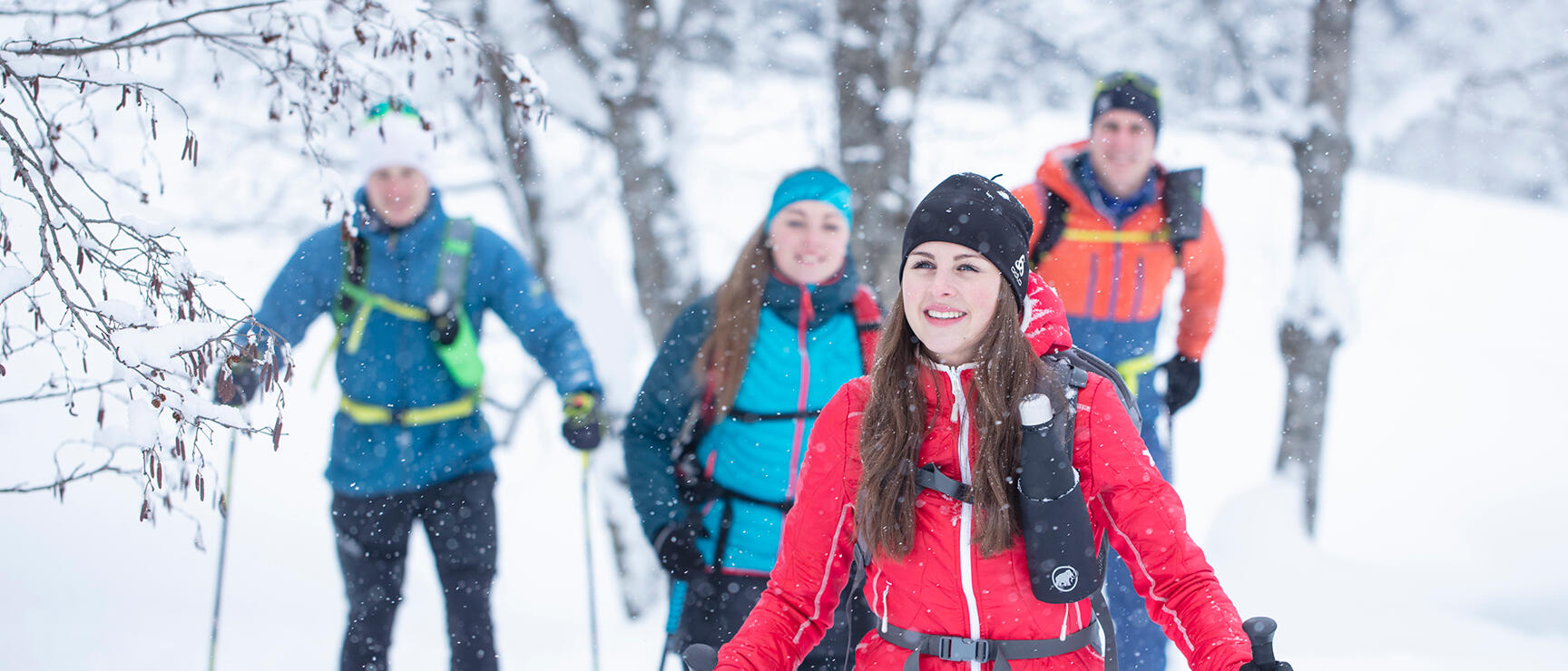
Winter Hiking in Austria
Strolling through the snow
Winter hikes away from the slopes
The snow glistening in the winter sun swallows the noise and roar, creating silence. Walking through the deep snow-covered landscape, through the Austrian national parks or idyllic winter villages, you will suddenly notice all the sounds more intensely: The crunch of your footsteps, your breath, the gurgling of a frozen stream. The snow and the silence allow us to find ourselves again.
There are hundreds of well-prepared winter hiking paths in Austria: From the Bregenz Forest, over sunny high plateaus up in the mountains, to winter hiking trails through the Hohe Tauern National Park.